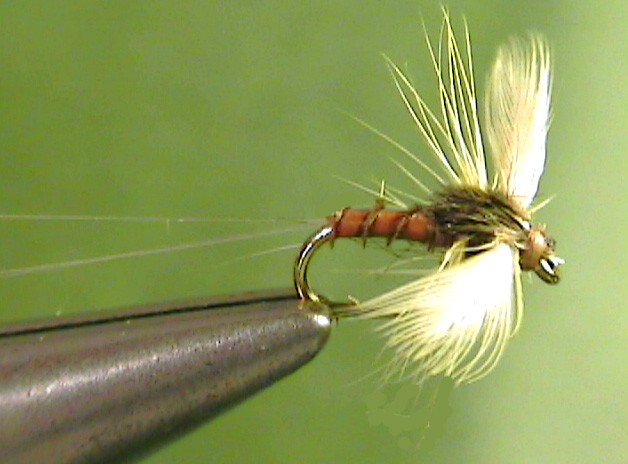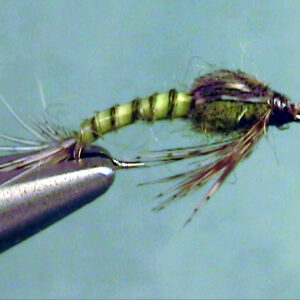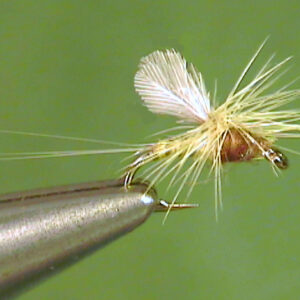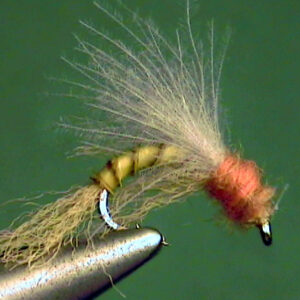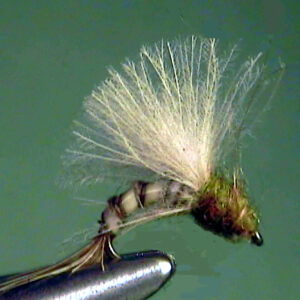Hook Size: 16
period of time. They may repeat this process a few times. You can use our dun pattern to
imitate the females prior to their falling spent on the water and dieing. Egg laying usually
occurs over moderate speed ripples. Spinners also tend to congregate at the head of
pools below the faster moving water that feeds the pool and that is where our
spent-spinner patterns are usually most effective.
Presentation:
You should imitate the dying females after they have deposited their eggs and fallen
spent by casting our Little Yellow Quill Spinner and allowing it to dead-drift from the ends
of the riffles into the slow water. It is also effective when used at the ends of the pools
where the egg-laying has or still is taking place. Use a down or down and across
presentation.
Again, please note that these mayflies hatch in the summer and early fall months when
the water is likely to be low. You must use a careful presentation and stay hidden from
the trout or otherwise you will spook the trout feeding on the spent spinners. This is easy
to do when they are feeding in slow moving, shallow water.
If you dress to match the surroundings, make slow, careful movements and good
presentations, you can still be successful. In many cases the light conditions will be very
low and you may have a difficult time see the Little Yellow Quill spent spinner. In those
cases you need to carefully watch your leader and fly line for the slightest unnatural
movement that indicates a take. Trout normally take the spinner by gently sipping them in
and this usually only causes a slight rise ring that is not readily noticeable. The rise ring
is your only other indication a strike has occurred. This is fairly technical fishing but doing
so correctly can produce a lot of trout in a short period of time.
